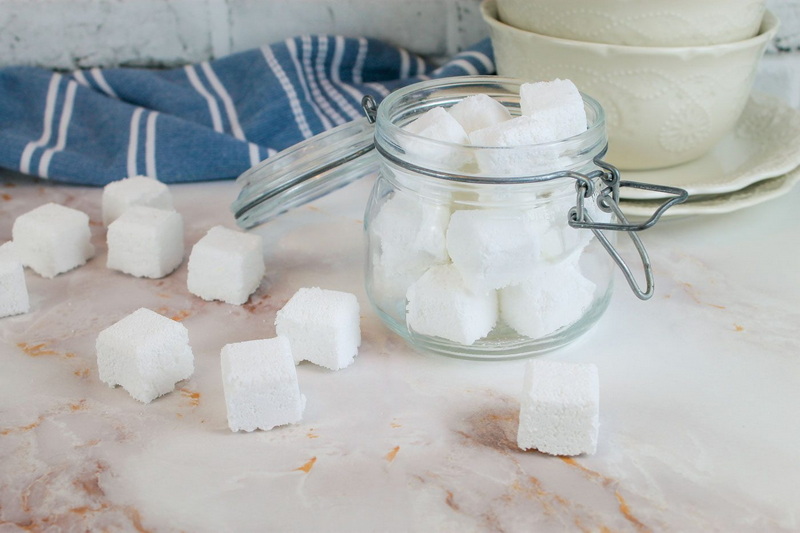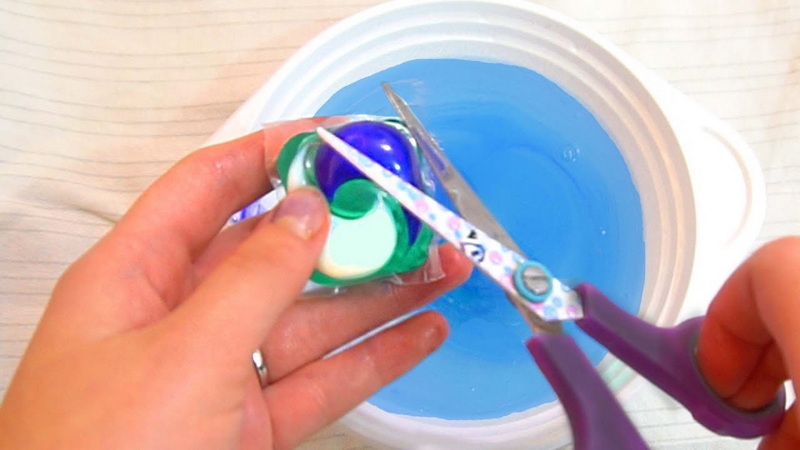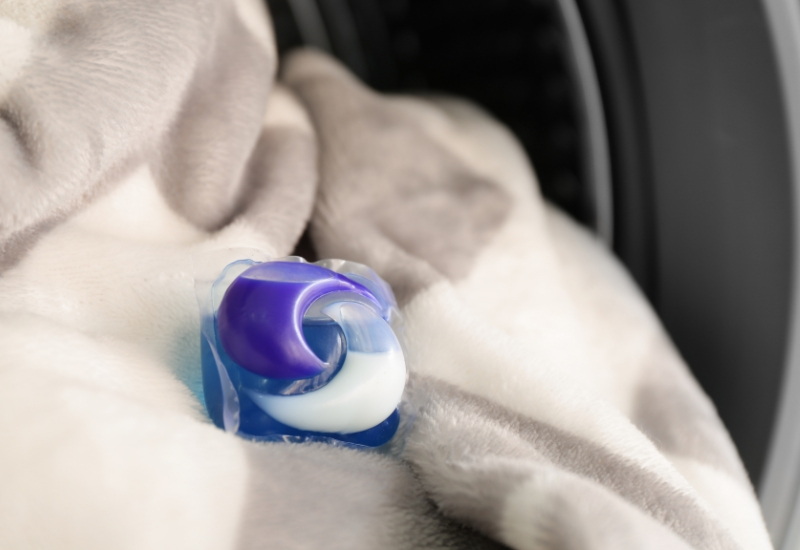Dongguan UFine Daily Chemical Co.,Ltd.
- All
- Product Name
- Product Keyword
- Product Model
- Product Summary
- Product Description
- Multi Field Search
Views: 222 Author: Tomorrow Publish Time: 11-02-2025 Origin: Site











Content Menu
● Basic pod formulation (example)
● Environmental and cost considerations
● Common challenges and troubleshooting
● Testing and quality considerations
● Practical tips for different water conditions
● Alternative formulations for sensitive fabrics
● Comparing with store-bought pods
● FAQ
>> 1. What ingredients are essential for homemade laundry pods?
>> 2. How should I store homemade laundry pods?
>> 3. Can I add fragrance to my pods?
>> 4. How many pods should I use per load?
>> 5. Are homemade pods safe for all fabrics?
Making your own laundry detergent pods can be a practical and cost-effective way to clean clothes while avoiding synthetic additives. This guide walks you through a straightforward method to prepare detergents at home, how to use them safely, and considerations for storage and effectiveness. By following these steps, you can customize cleaning power for various fabrics and levels of soiling.

Homemade laundry pods provide a convenient, low-wuss option for households looking to reduce chemical exposure and packaging waste. They combine detergents, softeners, and other cleaning agents into a single, easy-to-use unit. This article outlines a reliable approach to creating pod-based detergent with accessible ingredients, simple equipment, and clear safety measures. The aim is to empower you to tailor formulas to your climate, water hardness, and laundry needs, while keeping the process simple and affordable.
- Liquid or powder detergent base
- Borax or washing soda (sodium carbonate)
- Sodium sulfate or starch (as a filler and binder)
- Polyvinyl alcohol (PVA) film or another water-soluble film for pod forming
- Water for dissolution and binding
- Essential oil (optional, for fragrance)
- Protective equipment: gloves and eye protection
- Measuring cups or a digital scale
- Silicone molds or a clean, smooth surface for pod shaping
- Airtight container for storage
- Hygroscopic salt alternatives: microcrystalline cellulose or cationic polymers (optional, for improved binding in certain formulations)
- Wear gloves when handling powders to avoid skin irritation and to minimize inhalation exposure.
- Work in a well-ventilated area to reduce dust exposure.
- Keep children and pets away from the mixing area.
- Store pods in a sealed container away from moisture to prevent premature dissolution.
- Do not ingest; pods should be used only as laundry aids.
- Use labeling on containers that clearly states “For laundry use only” to prevent accidental use in other applications.
- Detergent base: 60 grams
- Borax or washing soda: 20 grams
- Sodium sulfate or starch: 10 grams
- Water: 5–10 milliliters (adjust as needed for binding)
- Optional fragrance: a few drops of essential oil
- Optional binder enhancer: 2–5 grams microcrystalline cellulose to improve cohesion
1. Prepare a clean workspace and gather all ingredients and equipment.
2. In a mixing bowl, combine the detergent base, Borax or washing soda, filler, and optional binder enhancer. Mix thoroughly to ensure even distribution.
3. Slowly add water while stirring until the mixture reaches a moldable paste. Be careful not to add too much water, as excess moisture will prolong drying time and may cause premature dissolution.
4. If using fragrance, mix in a small amount of essential oil at this stage. Consider using essential oils with antimicrobial properties to add a functional fragrance.
5. Scoop or press the paste into small, evenly sized molds or into a silicone tray designed for single-pod portions. If using film, prepare film sheets according to manufacturer instructions.
6. Allow the filled molds to dry in a low-h humidity environment or a controlled drying setup. This may take 24 to 72 hours, depending on humidity, thickness, and air circulation.
7. Remove dried pods from molds and seal them in a moisture-proof container. If using a water-soluble film, wrap each pod and seal as per film instructions. For films, ensure edges are tightly sealed to prevent leakage.
8. Test a small batch by dissolving one pod in a standard wash to confirm dissolution rate and cleaning performance before scaling up production.

- Liquid pod method: Create a concentrated paste and pour into pre-cut film pouches, sealing the edges with heat or a sealant compatible with the film.
- Capsule method: Use commercially available water-soluble film sheets and form into capsules before filling with detergent paste.
- Powder-only method: For those who prefer no film, create a compacted powder tablet using a tabletop press and a binder like microcrystalline cellulose; however, this will not form a traditional pod with a soluble film.
- Use one pod per standard load of laundry. Heavy soils may require two pods.
- Do not place pods in the washing drum directly if your machine recommends against it; follow the manufacturer's guidance for detergent pods.
- Depending on water hardness and soil level, adjust the amount of detergent or supplement with a stain remover booster for tough soils.
- For front-loading machines, verify compatibility with high-efficiency (HE) detergents and dosing recommendations.
- Store pods in a cool, dry place away from moisture and heat sources.
- Keep pods in a sealed, moisture-proof container with a desiccant if available.
- Avoid exposure to humidity, which can cause premature dissolution or clumping.
- Check the film manufacturer's guidelines for storage and shelf life. In humid climates, consider shorter shelf life and re-check after several weeks.
- Protect from direct sunlight, which can degrade fragrance and certain cosmetic additives.
- Homemade pods can reduce packaging waste if you reuse containers and opt for minimal packaging.
- The cost of raw materials varies by location; compare store-brand detergents to determine potential savings.
- Consider eco-friendly film options and non-toxic ingredients to minimize environmental impact.
- If you have access to bulk suppliers, bulk purchasing can reduce per-unit costs, but ensure proper storage conditions to maintain pod integrity.
- Pods dissolving too quickly: reduce moisture during mixing and ensure proper drying time. If necessary, increase binder content slightly or verify the film is properly sealed.
- Pods not forming: adjust the binder content and ensure thorough mixing of powders. If the mixture crumbs, add a small amount of water and remix.
- Fragrance sensitivity: skip essential oils or use unscented ingredients.
- Humidity-related issues: implement a drying chamber with controlled humidity levels or use a desiccant pack in storage.
- Follow local regulations regarding consumer cleaning products, labeling, and handling. Some jurisdictions require explicit ingredient disclosure and safety warnings.
- Keep all products out of reach of children and pets. Consider child-resistant lids for storage and limit packaging accessibility.
- Dispose of any leftover materials responsibly according to local guidelines. Do not pour concentrated chemical mixtures down drains in large quantities; dilute as appropriate for household disposal.
- Perform a small-scale test on a handful of laundry loads with different fabrics (cotton, synthetics, blends) to gauge performance.
- Observe dissolution time in both cold and warm water cycles. Adjust formulation if pods take too long to dissolve in cold water.
- Check for lint shedding or residue on fabrics after washing. If residue occurs, reassess binder and filler ratios.
- For home users, include simple warnings: “Keep away from children and pets. Use one pod per standard load. Do not puncture or cut pods.”
- If distributing to others, consider adding more formal labeling with ingredient lists and allergen notices, especially if essential oils or fragrants are included.
- Include storage guidance and safety measures on the label.
- Hard water: Consider adding a small amount of citric acid or washing soda to the formulation to help soften minerals and improve cleaning efficiency.
- Soft water: You may reduce the amount of detergent in each pod without sacrificing cleaning power, reducing soap buildup on clothes.
- Cold water washing: Ensure your pod dissolves efficiently in cold temperatures by adjusting moisture and film selection to promote rapid dissolution.
- For colorfast and delicate fabrics, reduce surfactant concentration and eliminate or minimize fragrance.
- Use a milder base detergent and increase the proportion of water to form a softer paste, improving compatibility with sensitive textiles.
- Consider adding a small amount of optical brighteners if they are compatible with the target fabrics and user preferences.
| Aspect | Homemade pods | Store-bought pods |
|---|---|---|
| Customization | High: tailor binder, fragrance, and surfactants | Limited: predefined formulas |
| Cost | Potentially lower with bulk ingredients | Typically higher per load |
| Environmental impact | Potentially lower due to reduced packaging | Packaging and additives vary by brand |
| Safety concerns | Handling powders and films requires caution | Pre-formulated safety packaging, but ingredients vary |
- Overly wet mixtures leading to slushy masses that won't dry properly.
- Inadequate drying time resulting in soft pods that crumble during handling.
- Using incompatible film or packaging that dissolves too quickly or too slowly in wash water.
- Not testing pods on multiple fabrics before broader use.
Creating your own laundry detergent pods can be an economical and customizable option for household cleaning. By selecting appropriate ingredients, maintaining clean working conditions, and adhering to safety practices, you can produce effective pods for daily laundry needs. With careful formulation and drying, homemade pods offer convenience and potential environmental advantages. The approach described here aims to balance practicality with safety, enabling you to adapt the process to your local climate, water chemistry, and laundry requirements.

Answer: A detergent base, a buffering or whitening agent (such as borax or washing soda), a filler or binder (like sodium sulfate or starch), and a water-soluble film for pod formation.
Answer: Store in a cool, dry, moisture-proof container away from direct sunlight and out of reach of children and pets.
Answer: Yes, you can add a few drops of essential oil, but use sparingly to avoid skin irritation and allergies.
Answer: Typically one pod per standard load; use two pods for heavily soiled or large loads.
Answer: Most common fabrics are compatible, but always test on delicate items and follow garment care labels. Avoid using pods on wool or silk unless the formulation is specifically designed for delicate fabrics.